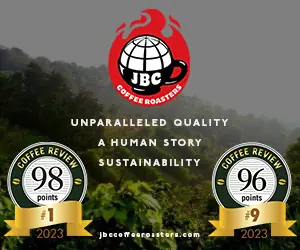Deduction is even more in order when dealing with blended coffees. Blends, of course, are mixtures of two or more coffees. There are two basic reasons to blend beans: One is to create a coffee with a flavor that is either better and more complete than, or at least different from, the flavor produced by a single-origin coffee. The other is to cut costs while producing a palatable drink.
Nearly all commercial coffees sold pre-ground in cans or bags are blended. Commercial roasters might want to market a pure Sumatra coffee, for instance, but they cannot count on obtaining an adequate supply of the same coffee month after month to warrant the risk of offering a name that is not immediately recognized and valued by consumers.
With many blends found in specialty-coffee stores, the name gives some clue to the origin of the coffees involved. The simplest to interpret is the famous combination of Yemen Mocha and Java, the Mocha Java of tradition. Such a blend is not designed to save money, but rather to combine two coffees that complement one another. Yemen Mocha is a sharp, fruity, distinctive medium-bodied coffee, whereas Java (usually) is smoother, deeper toned, and richer. Together the two coffees make a more complete beverage than either one on its own. Although even here, blend ambiguity reigns: a similar coffee from Ethiopia, Harrar, is often substituted for the Yemen in Mocha-Java blends, and coffees from Sumatra may be substituted for the Java. The philosophy of the blend remains the same, however.
Other blends are named after the dominant single-origin coffee and combine an inexpensive coffee with a more costly name coffee. Thus we have Jamaica Blue Mountain blends or Hawaii Kona blends. Ideally, the characteristics of the name coffee still come through, less intensely than in a single-origin coffee, but distinctively enough. There is also a savings for the consumer (and a profit for the seller). In other cases, the blender may use lesser-known coffees to mimic the characteristics of a more famous and expensive coffee, producing Blue-Mountain Style or Kona Style blends.
Another tendency in blend nomenclature might be called the generally geographical. We find a Central America blend, or a Caribbean blend. Or, we meet blends named for the time of day we presumably might drink them: Breakfast blend usually means a blend of brisk, medium-bodied coffees roasted more lightly than after-dinner blends, which generally consist of heavier-bodied, heavier-flavored coffees carried to a darker roast.










